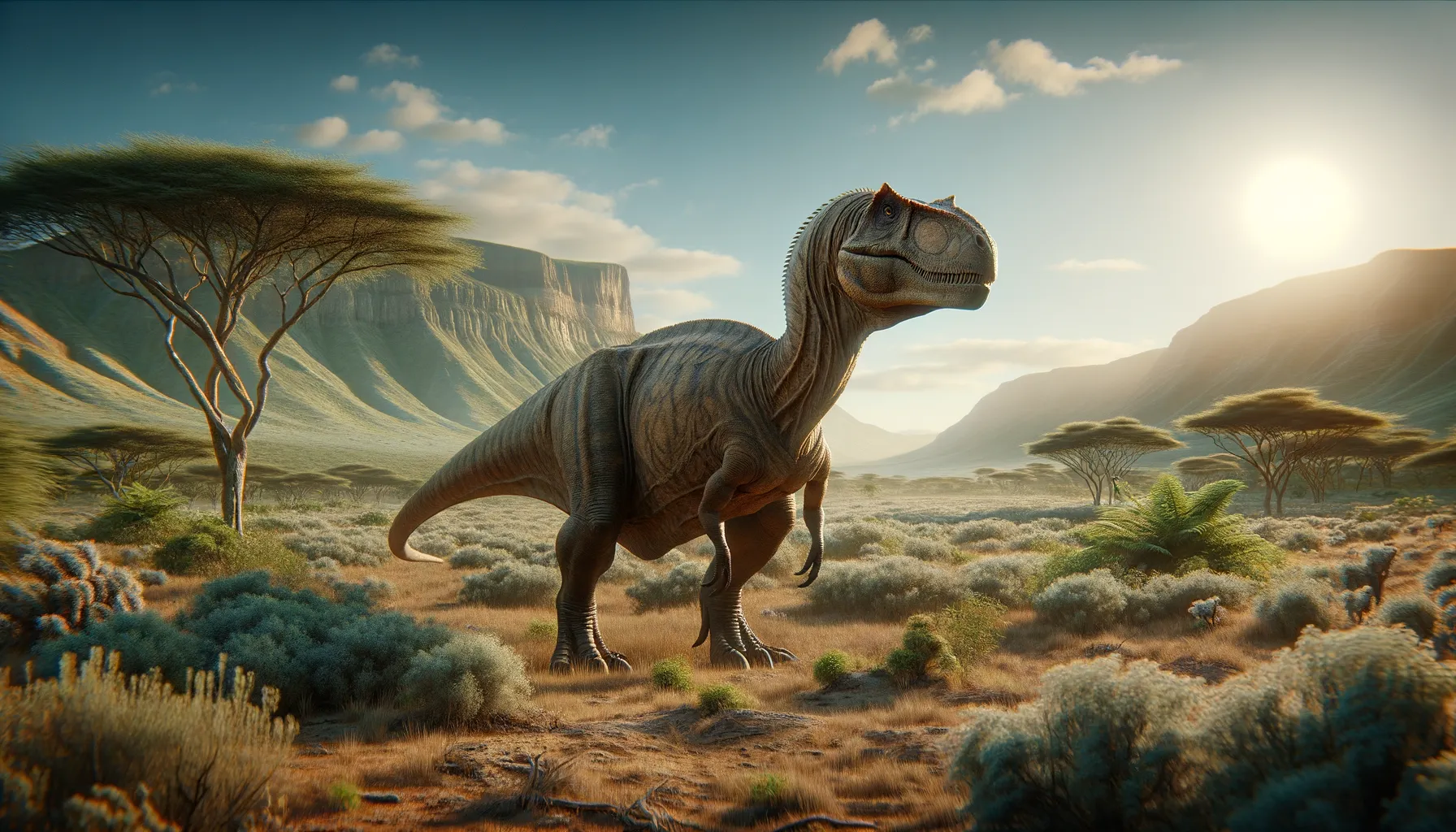
Kryptops
The slow-moving ambush predator!
Period
Cretaceous
Length
Around 25 feet long.
Height
Roughly 8 feet at the hips.
Weight
Approximately 1.5 tons.
Kryptops was a carnivorous dinosaur from the Cretaceous period, known for its short-snouted skull and robust body. It inhabited what is now Africa, living in semi-arid conditions with sparse vegetation. With a body adapted for strength rather than speed, it likely relied on ambush tactics to catch prey. Kryptops adds valuable insight into the early diversification of theropods on the African continent.
Diet
Kryptops was primarily a carnivore. It likely hunted smaller dinosaurs or scavenged for carrion, using its robust jaws to crush bones.
Hunting
Due to its build, Kryptops may have used ambush tactics to capture prey. It likely relied on stealth and the element of surprise rather than high-speed chases.
Environmental challenges
Kryptops lived in a semi-arid environment, facing challenges such as limited water sources and food scarcity. Seasonal changes would have impacted the availability of prey, requiring adaptability. Competition with other carnivores could have posed a significant challenge in its ecosystem.
Speed
Slow-moving due to robust build.
Lifespan
Estimated to live around 20 to 30 years.
First discovery
Discovered in 2000 in Niger by paleontologists.
Fun Facts
- Kryptops lived around 110 million years ago during the Early Cretaceous period in what is now known as Africa.
- The name 'Kryptops' means 'covered face,' which refers to its distinctive skull structure.
- Kryptops was a theropod dinosaur, which is the same group that includes the famous T. rex.
- Fossil evidence suggests that Kryptops likely had a large crest or ridge on its face, giving it a unique appearance.
- It was a medium-sized dinosaur, estimated to be about 7 to 9 meters long.
- Kryptops is believed to have been a carnivore, hunting smaller dinosaurs and possibly scavenging for food.
- The fossils of Kryptops were discovered in Niger, providing crucial evidence about dinosaur life in Africa.
Growth and Development
Kryptops likely experienced slow growth due to its sturdy build, with juveniles potentially staying close to adults for protection and learning. Its development might have been influenced by the availability of food and environmental conditions, impacting its survival rate.
Habitat
Kryptops inhabited semi-arid regions with some vegetation, likely near water sources to sustain its needs. Its environment may have included open plains and sparse forests, providing both hunting grounds and shelter.
Interaction with other species
Kryptops likely interacted with a variety of herbivorous dinosaurs, some being potential prey. It may have competed with other carnivorous dinosaurs for food resources. These interactions shaped the dynamic ecosystem of its time.
Natural lifespan
Kryptops's natural lifespan ranged from 20 to 30 years.
Reproduction
Kryptops may have laid eggs, with nests hidden in secluded areas to protect from predators. Parental care could have included guarding the nest and possibly teaching young ones hunting skills.
Social behaviour
Kryptops might have been a solitary creature, focusing on individual survival. However, it may have formed temporary groups during periods of abundance. Social interactions would have been limited to mating and possibly collaborative hunting.
Fossil locations
Fossils of Kryptops have been found in Niger, Africa. These findings provide insights into its physical structure and ecological role. The region's fossil record helps establish a timeline of its existence and adaptations during the Cretaceous period.
